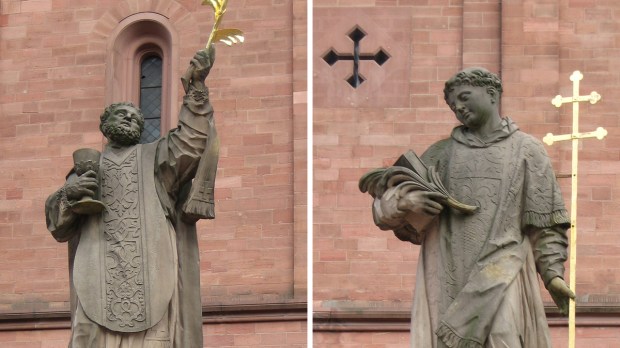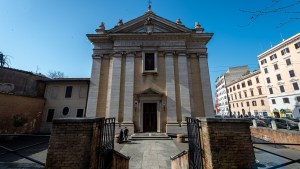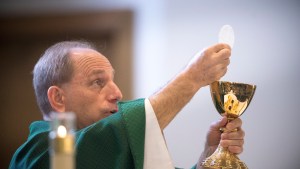During the celebration of Mass, the priest has the option of choosing Eucharistic Prayer I (also known as the “Roman Canon”). During this prayer the priest has the option of reciting two short lists of saints.
Besides the Blessed Virgin Mary, the saints mentioned in the Eucharistic prayer are exclusively martyrs, as martyrdom has always been seen as the supreme sacrifice that unites a soul to the sacrifice of Christ on the cross. Additionally, the prayer recalls the book of Revelation where a heavenly liturgy is depicted and attending the liturgy are those who “have washed their robes and made them white in the blood of the Lamb” (Revelation 7:14).
Among these martyrs mentioned in Eucharistic Prayer I are Sts. Marcellinus and Peter, two saints who are relatively unknown in the modern world.
However, while they may not be very popular in the present time, their example was seen as highly influential in the early Church.
St. Marcellinus was a priest, while St. Peter was an exorcist, both serving in the Roman church during the 3rd century. They were martyred in 303 under the persecution of Emperor Diocletian.
Little is known about these saints, but tradition states that Pope Damasus I composed a poetic epitaph after their deaths. He heard the story of their martyrdom from their executioner, who had converted to Christianity.
According to the New Catholic Encyclopedia, “The legend states that the martyrs were beheaded after they had dug their graves in a woods, but their relics were miraculously discovered and brought to the crypt.”
The legend claims thatthe two martyrs appeared in a dream to a wealthy Roman woman and they showed her the place of their martyrdom.
Pope Vigilius introduced their names into the Canon of the Mass in the 6th century, at the same time that he restored their tomb.
Early Christians would often gather at their tomb in the burial complex that later became known as the Catacombs of Marcellinus and Peter. These catacombs are still preserved today and contain a wealth of early frescoes of biblical scenes and early Christian artwork.
While little is known about these early martyrs, it is clear that their tomb was a focal point for Christians in Rome and helped preserve the faith during one of the most difficult times in Church history.



